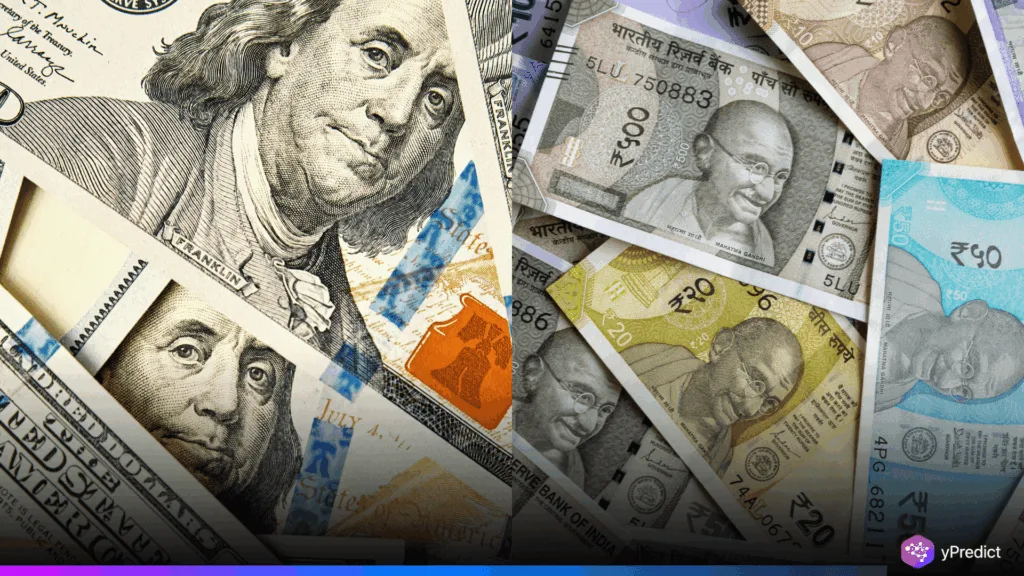
The USD/INR currency pair is facing its steepest weekly decline in months as the Indian Rupee gains momentum. The Rupee is rising due to a confluence of factors, including US political unrest and strong foreign investment in Indian stocks. Additionally, falling interest rate bets are supporting the currency’s upward trend.
Following President Trump’s criticism of Fed Chair Jerome Powell, market sentiment toward the US dollar grew more negative. Meanwhile, foreign institutional investors have accelerated equity purchases, helping India’s major indices hit new highs for 2025.
Will Equity Inflows Keep Rupee Momentum Alive?
Friday saw the Indian Rupee trade largely unchanged, supported by both a decline in oil prices and foreign inflows. Additionally, ₹12,594.38 crore was invested in Indian stocks by foreign institutional investors. This represents the month’s largest inflow in a single day.
The equity surge helped boost Nifty50 to 25,625 and Sensex30 near 84,000, their highest levels so far this year. Meanwhile, oil prices fell 16% from their recent peak following the Israel-Iran ceasefire. Thus, this drop helps countries that import oil, such as India, and gives the rupee more strength.
US Dollar Pressured by Fed Politics and Rate Cut Bets
President Trump’s renewed criticism of Fed Chair Powell has rattled investors, who fear political interference in monetary policy. Powell rejected discussions of lowering interest rates because of inflation uncertainties in his earlier testimony. However, Trump called him “dreadful” and made a suggestion that a more accommodating candidate would be chosen. As a result, this sparked worries that political influence might undermine the Fed’s independence.
Following a three-and-a-half-year low near 97.00 on the DXY index, the US dollar continued to underperform. The CME FedWatch Tool shows that hopes of a rate cut in July have risen sharply. The probability jumped from 12.5% last week to 20.7% today. Analysts at Societe Generale noted that if a pro-Trump nominee were chosen, investors would expect a policy shift. Moreover, they think the Fed’s position might shift to better suit political objectives.
Can USD/INR Recover from Bearish Reversal?
The USD/INR pair has fallen below the 20-day and 50-day Exponential Moving Averages. Consequently, this suggests a waning trend. Furthermore, the 14-day Relative Strength Index dropping below the 50-mark has validated bearish momentum.
The 200-day EMA offers instant support at roughly 85.35. However, the most recent high of 86.13 remains the key resistance level on the upside. As a result, the Indian Rupee might keep rising while the US dollar might continue to weaken if momentum holds.
Trade Talks and Growth Data Keep Rupee in Focus
A recent Reuters poll projects that India’s GDP will grow by 6.4% in FY25. Despite the slowdown, public sector spending is expected to keep India’s major economy expanding at the world’s fastest pace.
Washington and New Delhi’s upcoming trade talks are the next significant event that will affect the currency pair. By July 9, when the 90-day pause on reciprocal tariffs expires, the negotiations must be finished. Now, a bilateral deal that had been delayed because of regional tensions might proceed.
Final Words
The Indian Rupee seems to be trending in favor of the USD/INR. This is because of the rise in foreign inflows and the Fed’s criticism. Investors will be closely watching US trade and inflation data for the next big market move. Until then, political obstacles and interest rate expectations are likely to keep the US dollar under pressure.







